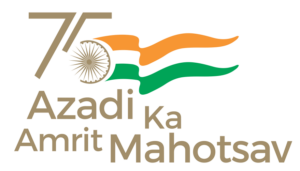The UGC (University Grants Commission) tied up with MeiT (Ministry of Education and Information Technology) to create a new portal with 23,000 higher education courses with an aim to make education available to remote parts of the country. This new portal was released on 29th July 2022 on account of second anniversary of NEP 2020, across 7.5lakh CSCs and SVPs across the country and shall be implemented from the forthcoming academic year 2022-2023.
[ CSC stands for common service centers and SVP stands for Special Purpose Vehicle. CSC is one of the main projects under the Digital India program. CSC acts like an access point to access essential healthcare, financial, education, etc services. To know more about CSC and the facilities it provides, visit the following link:
These courses include 23,000 postgraduate courses, 137 SWAYAM MOOC courses and 35 non engineering courses. SWAYAM which stands for Study Webs for Active-Learning for Young Aspiring Minds) is currently the world’s largest E-learning platform free of cost. This is the web page of SWAYAM:

To have an access to all these courses, visit the following link:
https://swayam.gov.in/explorer
“The CSCs aim is to provide digital access and make e-governance services available to the citizens especially those who are living in rural India at their doorstep. Nearly 2.5 lakh CSCs and SPVs are operating in Gram Panchayats and more than 5 lakh CSCs-SPVs centres are functional across the country. The CSCs and SPVs are managed and operated by entrepreneurs who belong to the local community and are referred to as village-level entrepreneurs (VLEs). VLEs operate the centres to earn their living by delivering online services. These centres have computers and internet connectivity,” said UGC chairman Jagadeesh Kumar
Although these courses are being provided for free, the person would have to pay Rs 20 per day to help the services and infrastructure of CSC/SVP and Rs 500 a month to repay the VLEs efforts and cost of infrastructure.
However it is still unknown as to how effective this will be as in remote parts of India, families don’t have enough money to purchase a laptop and along with it an internet connection. Nonetheless, the efforts being put forward by the government is laudable and according to NEP 2020, approximately 2 crore students will be able to come to education institutes through this new approach.
Although SWAYAM was launched on 9th July 2017 by Ram Nath Kovind, it wasn’t known much. But NEP 2020 will change this as The Academic Bank of Credit (ABC) will store the amount of credits, which is none other than the amount of work done under your degree, and the amount of work done can also be considered as doing an online course via SWAYAM.
I would like to conclude this article by saying that, although there maybe a few disadvantages in NEP 2020, the number of advantages definitely outnumbers it and we need to appreciate the efforts being put up by the government. Students are getting their freedom to choose subjects from class 6, to participate in internships from class 6, and the ABC will allow students to choose a combination of subjects as they wish such as physics and music.
We need to be patient and appreciate the efforts being put up by the government and by 2040, NEP 2020 would be successfully implemented and a new phase of India would take place

